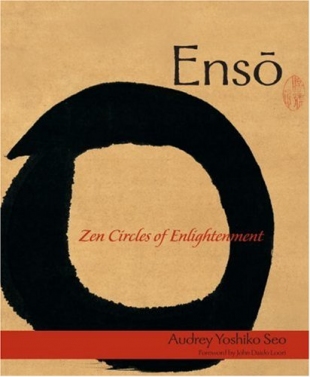"Zen circles, enso, are symbols of teaching, reality, enlightenment, and a myriad of things in between. Seemingly perfect in their continuity, balance, and sense of completeness, and yet often irregular in execution, enso are at once the most fundamentally simple and the most complex shape. They seem to leave little room for variation, and yet in the hands of Zen masters, the varieties of personal expression are endless. Enso evoke power, dynamism, charm, humor, drama, and stillness," writes Audrey Yoshiko Seo, who teaches Japanese art and culture at the College of William and Mary in Williamsburg, Virginia. She is a specialist in Zen brushwork and twentieth-century Japanese art.
In this fascinating paperback, Seo has collected a treasure trove of Zen enso along with commentary on the artists and various interpretations of their simple but elegant works of art with calligraphy. As Zen master John Daido Loori points out in the foreword, these creations are not used in worship ceremonies or as a part of prayer: "Zen art, as sacred art, is a direct expression of the ineffable. It helps transform the way we understand ourselves and the universe. It makes visible the invisible."
Among the interesting things we learn about enso are that almost all of the circles are created with a single brush stroke; that Ryonen (1646-1711) was one of the first women to work in this artistic medium; in an inscription Shunso beckons the viewer to "eat this and drink some tea" suggesting that the enso signifies a rice cake or some other round snack; in an enso by Ranzan Shoryu, he uses the phrase "The universe lingers, I bow my head" as a catalyst to his unusual circle. This paperback also includes biographies of the artists, many of whom are important Japanese Zen teachers.
